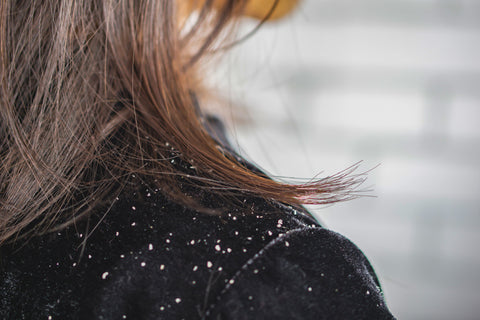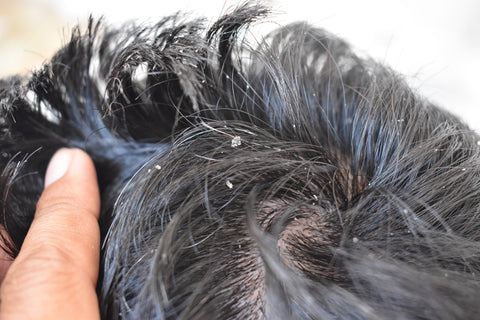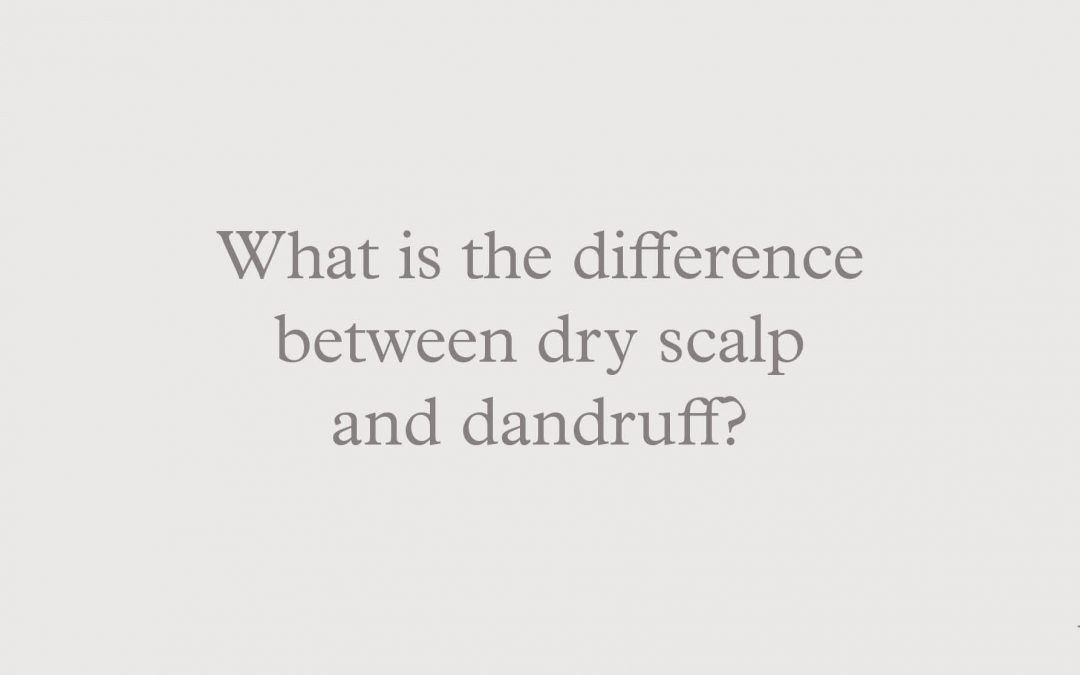What is a dry scalp?
A dry scalp is exactly that. It’s where the skin of the scalp becomes dry due to a marked reduction in water, just as can happen over most other regions of the body. When this happens, flakes can be seen on the scalp itself and can fall onto clothing, which can be mistaken for dandruff.
What causes dry scalp?
The outermost layer of the epidermis (the stratum corneum) consists of dead skin cells with the natural oil of the skin (sebum) interspersed between the cells forming what’s called the lipid barrier. This oil barrier allows for a high degree of water to be retained by the skin preventing transepidermal water loss (TEWL) and keeping the skin tissues healthy.

No, a dry scalp is uncommon and certainly far less common than dryness on other parts of the skin. The reason for this is that the scalp contains between 80,000 and 140,000 large hair follicles. Each of these has large sebaceous glands (oil-producing glands) attached to them, so the scalp, under normal circumstances, has a plentiful supply of oil and, therefore, an effective and healthy lipid barrier that ensures that the scalp tissues do not become dry.
What is dandruff?
Dandruff, unlike a dry scalp, is a widespread problem of the scalp that affects most people at some time in their lives. Dandruff is characterised by the formation of fine, white, or greyish loose scales.
There are variations in the severity and form of this condition. With some types of dandruff, the white or grey flakes easily leave the scalp surface, falling onto the clothes and shoulders. With darker clothing, this can be quite obvious and uncomfortable. In other cases, the scale is more adherent to the scalp, and rather than the flakes leaving the skin’s surface, sticky yellow scales build up to form a thick covering on the scalp.
With the simpler forms of dandruff (Pityriasis simplex), the scalp is usually a normal colour. If the condition becomes more severe (Seborrheic dermatitis), an underlying inflammation can render scalp tissues more tender and sensitive.
What causes dandruff?
Dandruff happens when skin cells form too fast. The epidermis, or the outermost protective layer of the skin, constantly changes. The cells begin growth at the base layer, deeper in the skin, and gradually move to the surface. This process is called epidermal turnover. Ordinarily, it takes approximately 28 days for the cells to move through the skin and to reach the surface – once there, they fall away naturally or during washing.
Interesting note. Most of the dust in our homes comes from the 500 million (give or take a few!) skin cells we lose every day.
The increased epidermal turnover may be caused or exacerbated by abnormally high amounts of a yeast, Malassezia Globosa, which is always found in the scalp (even a scalp without dandruff). Dandruff occurs when the quantity of the Malassezia yeast increases for one reason or another, but other factors such as stress or dietary factors may also trigger the condition.

Treating Dandruff
Washing the hair and scalp with ordinary anti-dandruff shampoos helps remove scale, but some of these shampoos can be harsh and abrasive, exacerbating the problem in the long term. If the underlying cause is not treated properly, then the scale will quickly return. Shampoos that control the level of micro-organisms on the scalp, but which also have a calming and soothing effect on the irritated scalp tissues are usually the best form of treatment.
The Juniper Scalp Therapy Shampoo is effective against both dandruff and seborrheic dermatitis, as well a dry scalp – buy here it here

